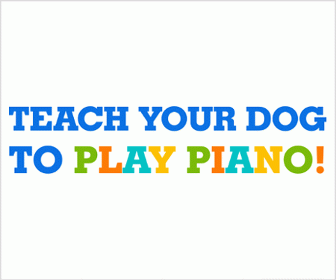
Feeding your dog the right amount of food is essential for their health and well-being. Overfeeding can lead to obesity, which can increase the risk of health problems such as heart disease, diabetes, and joint problems. Underfeeding can lead to weight loss, which can also be harmful to your dog’s health.
The amount of food you feed your dog will depend on a number of factors, including their age, breed, activity level, and overall health. However, there are some general guidelines that can help you determine how much food to feed your dog.
Factors to Consider When Feeding Your Dog
- Age: Puppies need to eat more food per pound of body weight than adult dogs. This is because they are growing and developing rapidly. As your puppy gets older, you can gradually decrease their food intake.
- Breed: Some breeds of dogs are more active than others. Active dogs will need to eat more food to meet their energy needs.
- Activity Level: The amount of exercise your dog gets will also affect how much food they need. Dogs that get a lot of exercise will need to eat more food than dogs that are less active.
- Overall Health: If your dog has any health conditions, such as a heart condition or diabetes, you may need to adjust their food intake.

How to Determine the Right Amount of Food to Feed Your Dog
There are a few different ways to determine the right amount of food to feed your dog. One way is to look at the feeding guide on your dog food’s label. This guide will give you a general recommendation for how much food to feed your dog based on their age, breed, and activity level.
Another way to determine the right amount of food to feed your dog is to use a calorie calculator. There are a number of different calorie calculators available online. These calculators will ask you for information about your dog, such as their age, breed, weight, and activity level. They will then calculate how many calories your dog needs per day.
Once you know how many calories your dog needs per day, you can divide that number by the number of calories per cup of your dog food. This will give you the number of cups of food you need to feed your dog per day.
It is important to note that these are just general guidelines. The best way to determine the right amount of food to feed your dog is to talk to your veterinarian. Your veterinarian can help you create a feeding plan that is specific to your dog’s individual needs.
Other Considerations When Feeding Your Dog
In addition to the factors mentioned above, there are a few other things to keep in mind when feeding your dog.
- Food Quality: It is important to feed your dog high-quality food. This will ensure that they are getting the nutrients they need to stay healthy.
- Water: Dogs need access to fresh water at all times.
- Treats: Treats should be given in moderation. Too many treats can lead to weight gain.
- Table Scraps: Table scraps should be avoided. They can be high in fat and calories, and they may not contain all of the nutrients your dog needs.
Conclusion
Feeding your dog the right amount of food is an important part of their overall health and well-being. By following the guidelines in this blog post, you can help ensure that your dog is getting the nutrients they need to stay healthy and happy.
Here are some additional tips for feeding your dog:
- Feed your dog at regular intervals. This will help to keep their blood sugar levels stable.
- Don’t leave food out for your dog all day long. This can lead to overeating.
- Watch your dog’s body condition. If your dog is gaining or losing weight too quickly, you may need to adjust their food intake.
- If you are unsure how much to feed your dog, talk to your veterinarian.They can help you create a feeding plan that is specific to your dog’s individual needs.
Frequently Asked Questions
Q: How much should I feed my puppy?
A: Puppies need to eat more food per pound of body weight than adult dogs. A good rule of thumb is to feed your puppy 3-4 times their age in months in cups of food per day. For example, a 3-month-old puppy should eat 9-12 cups of food per day.
Q: How much should I feed my adult dog?
A: The amount of food you feed your adult dog will depend on their breed, activity level, and overall health. A good rule of thumb is to feed your adult dog 2-3% of their body weight in cups of food per day. For example, a 50-pound dog should eat 1-1.5 cups of food per day.
Q: What if my dog is overweight?
A: If your dog is overweight, you will need to reduce their food intake. You can do this by feeding them less food per meal or by spreading their food out over more meals. You should also increase your dog’s exercise levels.
Q: What if my dog is underweight?
A: If your dog is underweight, you will need to increase their food intake. You can do this by feeding them more food per meal or by giving them more frequent meals. You should also make sure that your dog is getting enough exercise.
Q: What are some signs that my dog is not getting enough food?
- Your dog may be begging for food more often.
- Your dog may be losing weight.
- Your dog’s fur may be dull or unhealthy.
- Your dog may be lethargic or have less energy.
Q: What are some signs that my dog is getting too much food?
- Your dog may be overweight.
- Your dog may have difficulty breathing.
- Your dog may have skin problems.
- Your dog may have joint problems.
Q: What should I do if I am unsure how much to feed my dog?
If you are unsure how much to feed your dog, you should talk to your veterinarian. They can help you create a feeding plan that is specific to your dog’s individual needs.
I hope this FAQ section has been helpful. Please let me know if you have any other questions.
Pretty nice post. I just stumbled upon your blog and wished to say that I have really enjoyed surfing around your blog posts. In any case I will be subscribing to your feed and I hope you write again soon!